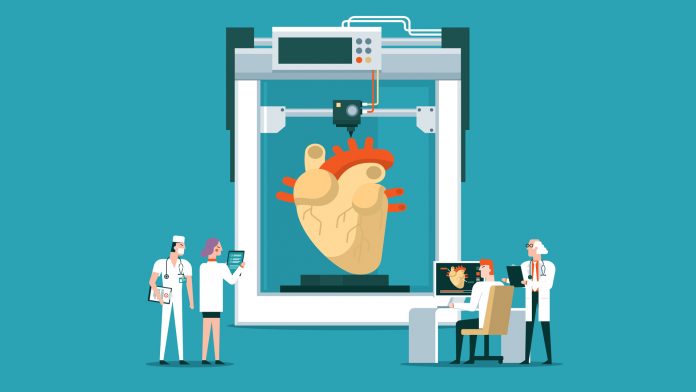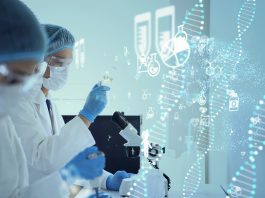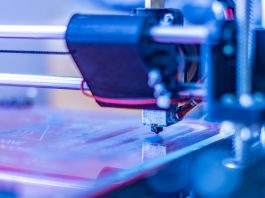A group of nanoengineers has manufactured a highly efficient 3D bioprinter that will potentially transform the landscape of drug development.
The groundbreaking innovation has been achieved by researchers at the University of California San Diego, who have developed a high-throughput 3D bioprinter that runs at incredible speeds, producing an astonishing 96-well array of human tissue sample in 30 minutes – which could in turn drastically advance disease modelling and high-throughput preclinical drug screening.
Their research is published in the journal Biofabrication.
Drug development is an extremely time consuming and expensive process for pharmaceutical companies, with novel medications taking up to 15 years and costing in excess of $2.6 billion to get on the market. The arduous process starts with the test tube screening of thousands of drug candidates, with successful drugs moving on to animal testing and clinical trials before finally attaining the necessary approval to be put on the market.
The newly developed 3D bioprinter looks to speed up this process by allowing drug developers to filter out poor drug candidates by testing on large quantities of printed human tissue.
Shaochen Chen, a professor of nanoengineering at the UC San Diego Jacobs School of Engineering, said: “With human tissues, you can get better data, real human data, on how a drug will work. Our technology can create these tissues with high-throughput capability, high reproducibility, and high precision. This could really help the pharmaceutical industry quickly identify and focus on the most promising drugs.”
“What we are developing here are complex 3D cell culture systems that will more closely mimic actual human tissues and that can hopefully improve the success rate of drug development,” said Shangting You, a postdoctoral researcher in Chen’s lab and co-first author of the study.
The 3D bioprinter is proficient in fabricating complex, microscopic features like human liver cells that contain blood vessel networks with incredible speed, taking only ten seconds to print one of these tissue samples – a significant advancement when compared to similar technologies that require hours to achieve comparable results. Furthermore, due to automatically printing samples into industrial well plates directly, the time and labour-intensive method of transferring samples for screening have been eradicated.
Chen explained: “When you’re scaling this up to a 96-well plate, you’re talking about a world of difference in time savings, at least 96 hours using a traditional method plus sample transfer time, versus around 30 minutes total with our technology.
“It’s a different approach than growing organoids for drug screening. With organoids, you’re mixing different types of cells and letting them self-organise to form a 3D structure that is not well controlled and can vary from one experiment to another.
“Thus, they are not reproducible for the same property, structure and function. But with our 3D bioprinting approach, we can specify exactly where to print different cell types, the amounts and the micro-architecture.”
For the 3D bioprinter to work, the researchers first have to design 3D computer models of the biological structures, some coming from medical scans to be personalised to a patient’s tissues. These are then transferred into 2D snapshots and converted into millions of microscopic-sized mirrors, each controlled digitally to project patterns of violet light that are 405 nanometres in wavelength. These patterns are then shined onto a solution containing live cell cultures and light-sensitive polymers that, when exposed to light, will solidify. Every single layer of the structure is then printed continuously, fabricating a 3D solid polymer scaffold encapsulating live cells that will evolve into biological tissue.
Integral to the efficiency of the printer is the digitally controlled micromirror array, as it produces 3D structures far quicker than other methods by projecting entire 2D patterns onto the substrate as it prints layer by layer.
Henry Wang, a nanoengineering PhD student and co-first author of the study, said: “An analogy would be comparing the difference between drawing a shape using a pencil versus a stamp. With a pencil, you’d have to draw every single line until you complete the shape. But with a stamp, you mark that entire shape all at once. That’s what the digital micromirror device does in our technology. It’s orders of magnitude difference in speed.”









